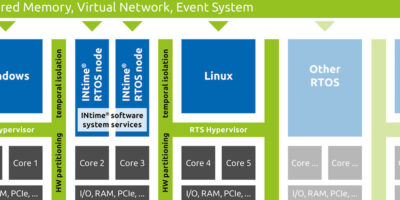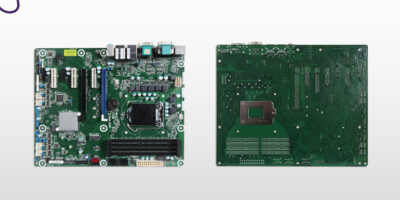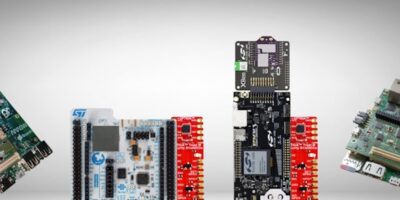RTOS provider, TenAsys has teamed up with Intel co-development partner and hypervisor technology specialist, Real-Time Systems to develop PC-based software for a secure, consolidated system of disparate workloads for deterministic applications.
The RTS Hypervisor for x86 architecture enables TenAsys’ INtime RTOS applications to run alongside different operating systems and varying workloads in hard real-time at minimum jitter, avoiding any overhead from virtualisation. Designers can make use of the latest protocols and CPU technologies like time-sensitive networking (TSN) or Intel Time Coordinated Computing (TCC). According to RealTime Systems, the consolidated system enhances system performance, reduces system power consumption, increases flexibility in communication and enables shared use of USB, NVMe, and advanced host controller interface (AHCI) devices.
INtime distributed RTOS has been para-virtualised to operate within the RTS Hypervisor. The hardware-assisted virtualisation technology securely shields real-time applications from other operating systems. This improves security, says TenAsys and also allows a reboot of the general purpose OS while real-time applications on INtime keep running during the process.
“INtime for Windows has been one of the most popular Windows real-time environments for many years. With INtime Distributed RTOS support in our solution, even more designers around the globe can now benefit from the RTS Hypervisor, which is developing more and more into the de facto standard for industrial automation and medical applications,” said Gerd Lammers, founder of Real-Time Systems.
For qualified applicants, Real-Time Systems and TenAsys provide a pre-integrated evaluation version free of charge.
TenAsys was founded in 2000 and provides real-time software and services based on the Intel x86 architecture and Microsoft Windows for mission-critical systems.
Real-Time Systems provides hypervisor technology specialising in real-time virtualisation. The Intel co-development partner was founded in 2006 and is headquartered in Ravensburg, Germany.
Since 2018, Real-Time Systems is a company of congatec AG with partners in Europe, USA, and Asia.







